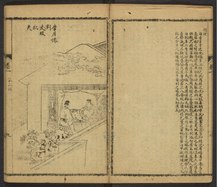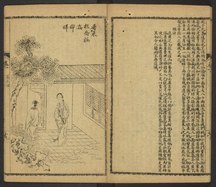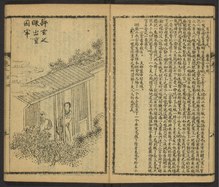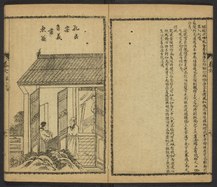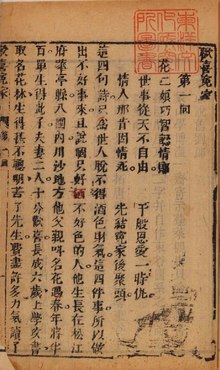
Huanxi Yuanjia ( traditional Chinese: 歡喜冤家; simplified Chinese: 欢喜冤家), [a] also translated into English as Enemies Enamoured, [1] [b] Enemies in Love, [3] and Lovers and Foes, [4] is a late Ming dynasty Chinese short story collection by a writer under the pseudonym Xihu yuyin zhuren (西湖漁隱主人).
The collection was published in the early 17th-century and features a wide variety of love stories that range from erotic to comical in twenty-four chapters.
Notes
- ^ Also known in Chinese as Huanxi Qijuan ( traditional Chinese: 歡喜奇觀; simplified Chinese: 欢喜奇观) and several other titles.
- ^ Or Enamored Enemies. [2]
Citations
- ^ McMahon, Keith (1995). Misers, Shrews, and Polygamists: Sexuality and Male-female Relations in Eighteenth-century Chinese Fiction. Duke University Press. p. 171.
- ^ Zhou, Zuyan (2003). Androgyny in Late Ming and Early Qing Literature. University of Hawaii Press. p. 317.
- ^ Martin W. Huang (2020). Desire and Fictional Narrative in Late Imperial China. Brill. p. 62.
- ^ Quenzer, Jorg G. (2021). Exploring Written Artefacts: Objects, Methods, and Concepts. De Gruyter.

Huanxi Yuanjia ( traditional Chinese: 歡喜冤家; simplified Chinese: 欢喜冤家), [a] also translated into English as Enemies Enamoured, [1] [b] Enemies in Love, [3] and Lovers and Foes, [4] is a late Ming dynasty Chinese short story collection by a writer under the pseudonym Xihu yuyin zhuren (西湖漁隱主人).
The collection was published in the early 17th-century and features a wide variety of love stories that range from erotic to comical in twenty-four chapters.
Notes
- ^ Also known in Chinese as Huanxi Qijuan ( traditional Chinese: 歡喜奇觀; simplified Chinese: 欢喜奇观) and several other titles.
- ^ Or Enamored Enemies. [2]
Citations
- ^ McMahon, Keith (1995). Misers, Shrews, and Polygamists: Sexuality and Male-female Relations in Eighteenth-century Chinese Fiction. Duke University Press. p. 171.
- ^ Zhou, Zuyan (2003). Androgyny in Late Ming and Early Qing Literature. University of Hawaii Press. p. 317.
- ^ Martin W. Huang (2020). Desire and Fictional Narrative in Late Imperial China. Brill. p. 62.
- ^ Quenzer, Jorg G. (2021). Exploring Written Artefacts: Objects, Methods, and Concepts. De Gruyter.
